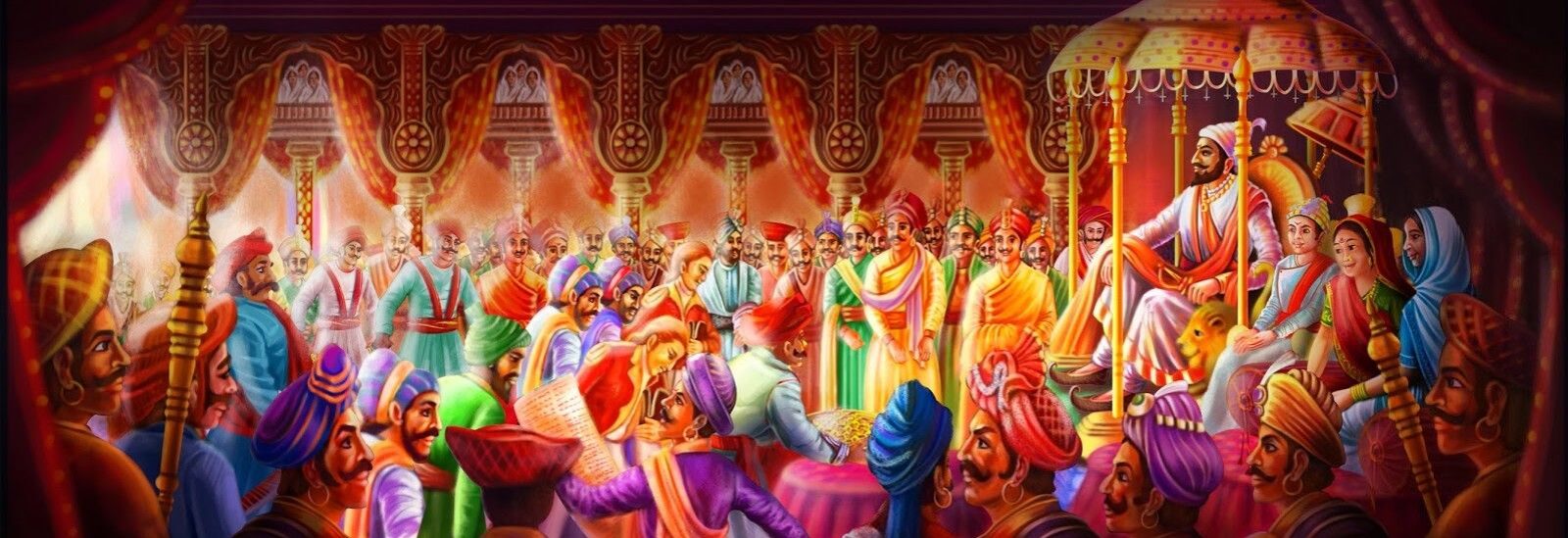Continue reading from Part VII
Land revenue was the main pillar of revenue during the reign of Shivaji Maharaj. The Maharaj reduced the powers of Mirasdars. The Chhatrapati surveyed and classified the land and accordingly the per bigha Tax was levied as mentioned below.
ऽ Forest / Pastures: 8 Man (मण)
ऽ Brackish (river or sea shore): 6 1/4 man (मण)
ऽ Baile (ground or maal) : 6 1/4 man (मण)
ऽ Khadi (rocky land) : 6 1/4 man (मण)
ऽ Turvat or Katani (suitable for jute cultivation): 5 man (मण)
ऽ Banyan tree: 5 man (मण)
ऽ Rupal: 8 man (मण)
ऽ Ruhi: 5 Man (मण)
These rates are for general season. The rate depends on the season. In the beginning, tax was waived on the land of Malrans (non-used open land). But in course of time this modest tax came to be levied on it and poor cultivators brought even such lands under cultivation. Also, the farmers brought rocky and slightly shallow lands under cultivation. Taxation on such lands was based on plough. Tax on hilly lands was also collected on per plough basis. In some places, 5 to 6 bighas of such lands were counted as one bigha.
The crop wise rate of land tax depended on the type of crop as well as type of land. A total of 12 types of rice farming were practiced at that time.
Revenue from 4 important types rice:
The top i.e. the first grade rice was taxed at 12 1/2 man (मण)
Doom i.e. second grade rice was taxed at 10 man (मण)
Seem i.e. the third grade rice was taxed at 8 man (मण)
Charum i.e. Char Doom i.e. fourth grade rice was taxed at 6 1/2 man (मण)
Revenue from some other crops:
Clutivation of Nachani at high quality ground was taxed at 3 1/4 man (मण)
Clutivation of Nachani at low quality ground was taxed at 3 man (मण)
Clutivation of Vari at high quality ground was taxed at 3 man (मण)
Clutivation of Vari at low quality ground was taxed at 2 1/2 man (मण)
Cultivation of Harik was taxed at 3 Man (मण)
(Taxes on Nachani, Vari and Harik are given at per plough rate. Also, high quality land means fertile land and vice-versa)
Vegetable Patsthal (पाटस्थळ) was taxed at 2 Hon (होन)
Vegetable Motsthala (मोटस्थळ) was taxed at 1 Hon (होन)
Sunth Patsthal (पाटस्थळ) was taxed at 3 Hon (होन)
Sunth Motsthala (मोटस्थळ) was taxed at 2 Hon (होन)
Sugarcane was taxed at 2 Hon (होन)
Banana Garden was taxed at 2 Hon (होन)
(Here the taxes are given at per bigha rate.)
On the whole, the collection of land revenue during Shiva period was not done according to any single rigid rule. So the whole levy depended on the type of land, water, weather, crop. After the tax was recovered in the first year, the tax was generally levied on the basis of the same information until a dispute arose. Inspection and measurement of cultivated land should not be done every year. As the citizens of Rajapur did not pay tax in form of grain, hence they were charged tax in form of cash i.e. Rs. 15/- per share (खंडी).
Tax of 3 annas per tree of Fanas
Tax of 12 Annas per 100 unit (वेळीं) of Panmala
Tax of 1 rupee per taadi tree
Tax of 1/8 to 3.5 sher as per pophali / betel nut quality
50 to suitable amount of coconuts per coconut tree
(The price of coconuts cannot be said. But the revenue of the garden was determined by taking the price of those coconuts at a certain rate.)
The rules for determining the revenue of horticultural land were more complicated. The revenue rate of each tree was determined by counting the fruit bearing trees and the revenue rate of the orchard was taken from all such trees together.
or goto Part I, Part II, Part III, Part IV, Part V, Part VI, Part X, Part XI, Part XII, Part XIII, Part XIV, Part XV, Part XVI, Part XVII, Part XVIII


Pingback: Revenue System (Part XVII- Other Revenue 2) – Chatrappati Blogging
Pingback: Revenue System (Part IX – Measurement of Land) – Chatrappati Blogging